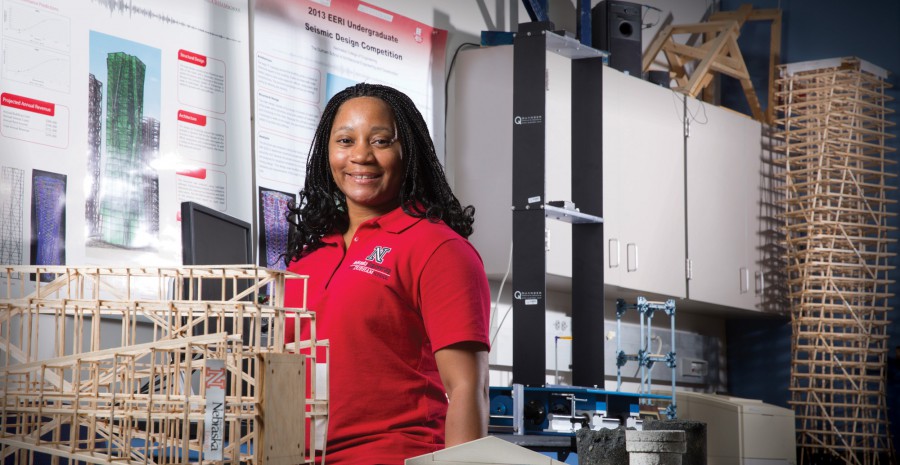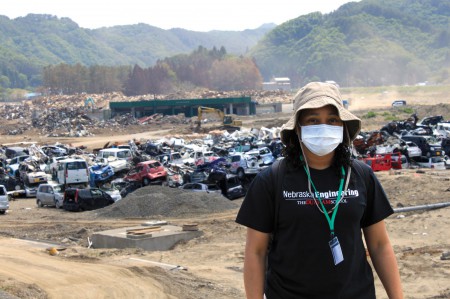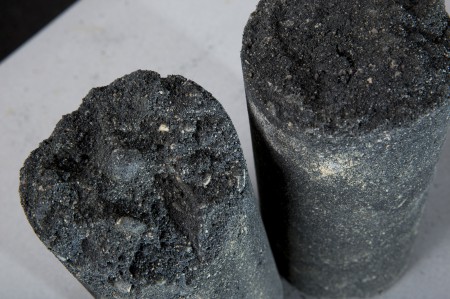Digging Out: Managing Disaster Debris
Mountains of rubble are devastating trademarks of tornadoes, earthquakes, hurricanes and other natural disasters. They hinder recovery and stand as emotional reminders of loss.
Research on how best to deal with the debris is limited, but UNL engineer Terri Norton is working to fill the void. Her studies of disaster debris management and recycling are giving communities information to better plan for and rebuild after disasters.

“Disasters are affecting communities all across the globe,” said Norton, an associate professor in the Charles W. Durham School of Architectural Engineering and Construction at the Peter Kiewit Institute in Omaha. “We need to understand ways in which we can help communities recover.”
She’s working with the U.S. Geological Survey as part of a team investigating what would happen if a large tsunami struck California’s coastline.
Norton is developing models to determine how much and what types of debris would be generated and how best to manage it. She’s primarily investigating anticipated debris in southern California residential areas and at the Long Beach and Los Angeles ports. She’ll use the results to analyze existing emergency plans to determine if their debris management strategies are appropriate.
Not all debris requires disposal. Norton also is researching recycling debris for potential use in reconstruction. In one project she is examining the structural characteristics of concrete from damaged buildings and whether it can be used in concrete mixes to build temporary shelters. She’s also studying rubber from tires as another potentially recyclable material.
In her travels to disaster sites, including the 2011 Japan earthquake and tsunami, Norton said she’s come to appreciate her research’s social aspects. Rubble may have personal value or cultural or religious significance, which also must factor in to debris management.
“For civil engineers, our key goal is human safety,” Norton said. “So understanding how a disaster affects our community and improving how our community recovers and becomes more resilient after these types of events is what’s important to me.”






